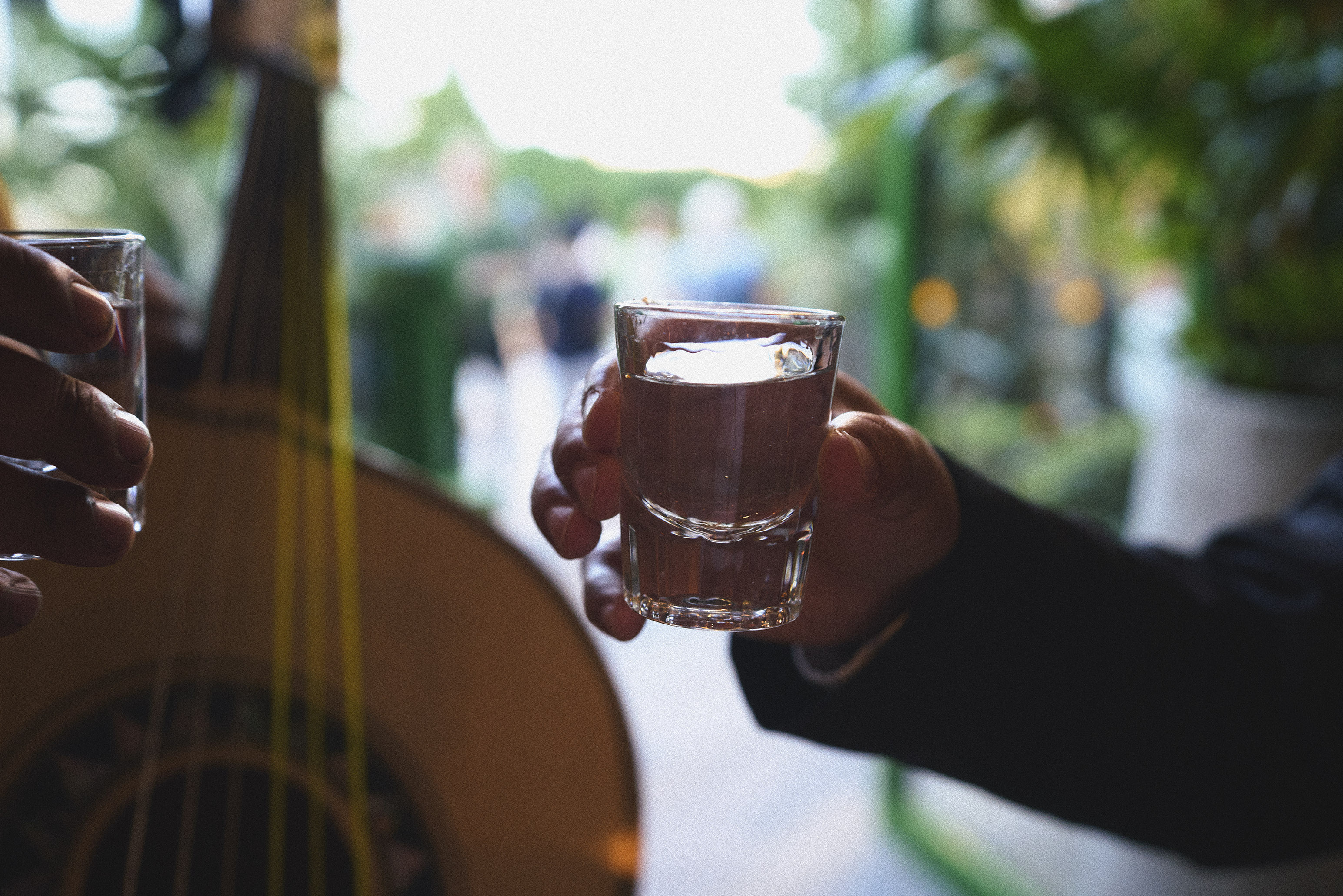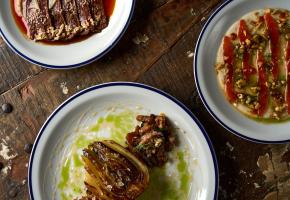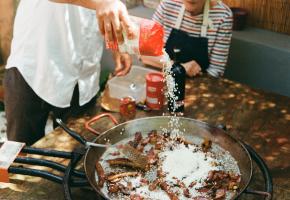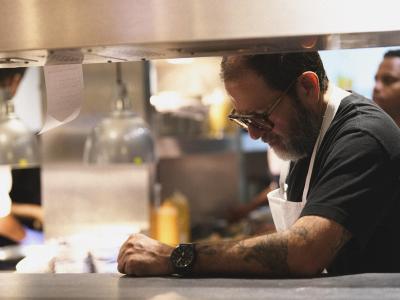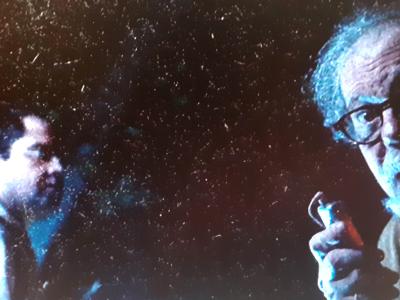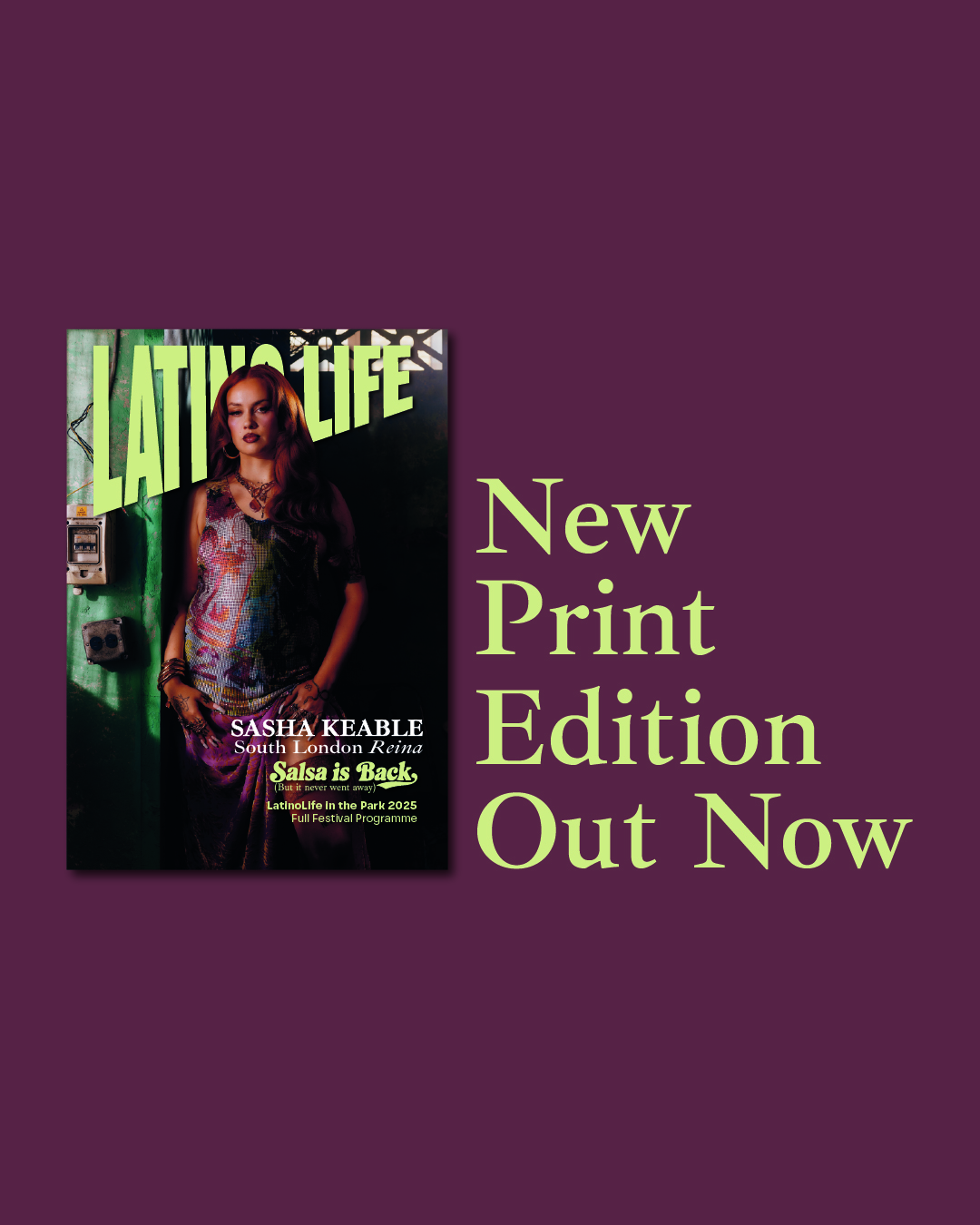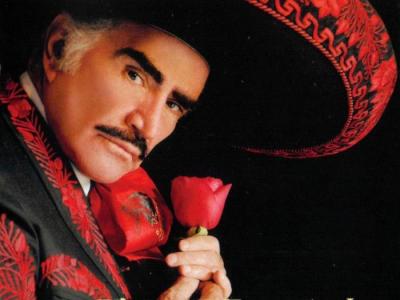Enrique Olvera is more than a chef. He’s a cultural force. His work has transformed the way we think about Mexican cuisine, not only by elevating traditional techniques but by refusing to simplify or essentialise what Mexican food is. His menus are layered with references, both intimate and collective. They speak about history, geography, identity.
El Pastor, where the dinner took place, is a beloved taquería in London. Born out of love for Mexico and its food culture, it’s a place that feels relaxed, familiar, loud in the best ways.
The collaboration made perfect sense and the meal unfolded in four moments.
We began with a cured tuna aguachile, paired with a glass of sake - a gesture that already disrupted the expected logic of ‘Mexican dinner.’ This kind of juxtaposition is typical of Olvera’s work — not fusion in the shallow sense, but a deeper entanglement of traditions, where acidity, salinity, and umami speak across oceans. Japanese and Mexican cuisines have long histories of contact, both in Mexico itself and through diasporic movements, and this dish was a to nod to that.
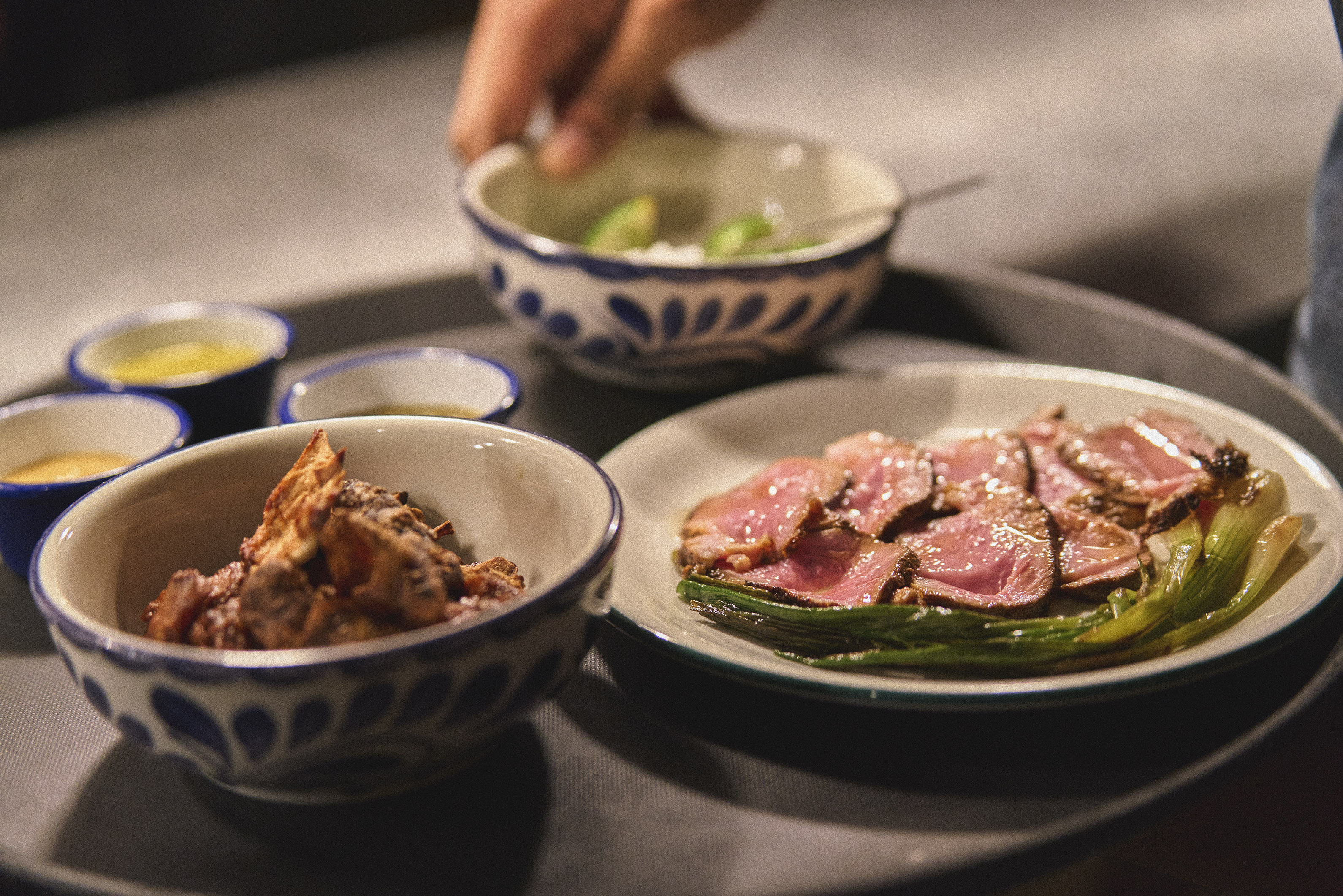
Then came a deep-fried cod taco in the Sinaloa style, served with a cold beer and a shot of tequila. It felt familiar. Not because I’d had it before, but because it tapped into something recognisable: a texture, a memory, the oil on your fingers, after eating by the sea. It's the kind of food that comes with sand, sunlight and heat.
The third course was a Jerusalem artichoke barbacoa, with artichoke chicharrón and a pour of Spanish wine. I lingered here. It was earthy, tender, unexpected. To make chicharrón from artichoke is to invert something, to imagine otherwise. It’s playful, but not just for the sake of cleverness. It opens space to think about how ingredients carry symbolism, about how vegetal flesh can stand in for something it has historically been excluded from.
Dessert was a fig tamal with ice cream, followed by a carajillo. The proper Mexican digestive. Strong, sweet, and bitter. Just like memory.
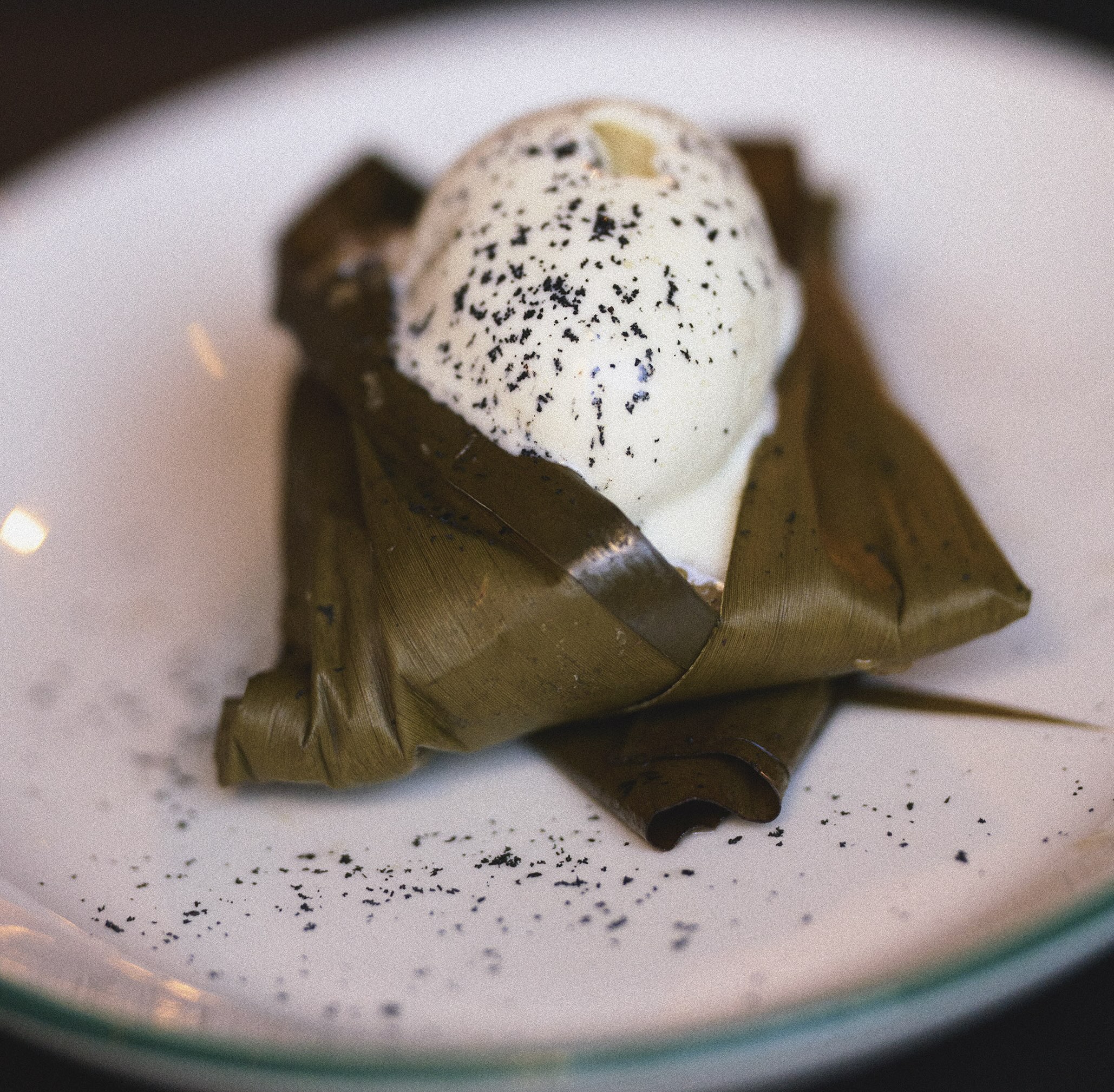
All of this happened in the midst of a mariachi band that circled around the room, playing old Mexican songs. One of them was a real mariachi, straight from Mexico. The music didn’t feel like an add-on. It became part of the texture of the night — loud, warm, full of joy. It was chaotic, but lovingly so. Drinks overlapped. We were still finishing one course as the next one was already sliding onto the table. There was no pause. No careful sequencing. But it didn’t feel careless. It felt like Mexico.
Or more precisely, like the embodied rhythm of eating in Mexico. Because it wasn’t a perfectly timed fine dining experience, and that’s the point. Food in Mexico is not only nourishment. It’s a reason to gather. A place to talk. A structure for feeling close. This evening recreated that beautifully. Food as pretext. Food as rhythm. Food as structure for affection. I thought of family tables. Of plastic chairs on sidewalks. Of children playing between legs. Of someone’s uncle asking for another beer. Of stories being told again. It wasn’t about elegance. It was about presence.
As I sat there, surrounded by music, half-finished drinks, and the warm buzz of voices, I started thinking about the way food holds space in culture and how often it’s left out of the frame in art discourse.
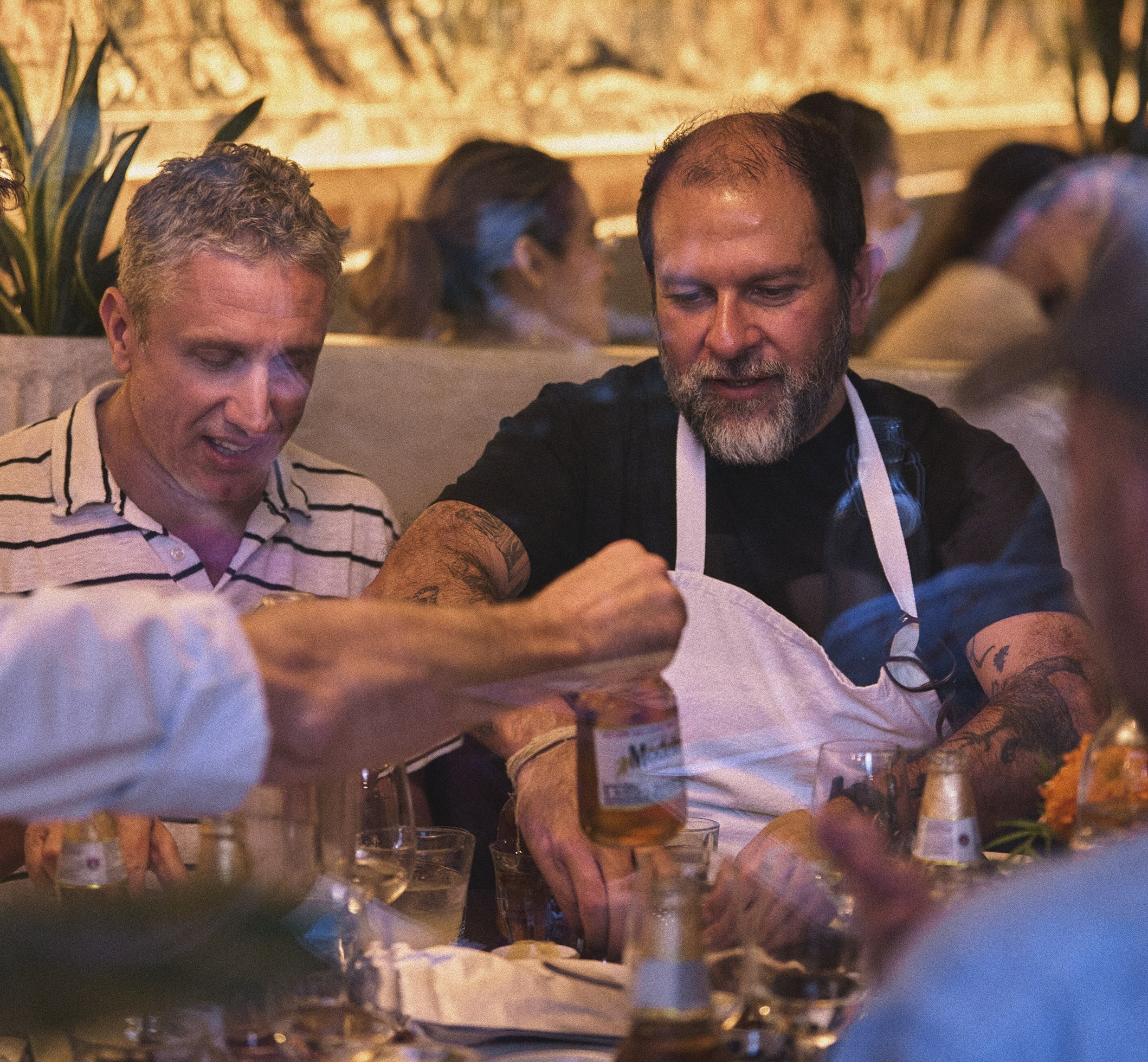
There’s an ongoing conversation, sometimes shallow, sometimes necessary, about whether food is art. The framing is often hierarchical. Can a dish be a sculpture? Can food belong in a museum? But maybe we’re asking the wrong questions. Maybe it’s not about form or value, but about function. About what food does.
Like art, food is a technology of relation. It holds space. It gathers memory. It creates meaning across time and language. In The Politics of Pidginization, Bonaventure Soh Bejeng Ndikung writes about disrupting the assumed neutrality of the exhibition space and making room for other kinds of gathering. Sonic, spiritual, sensual. Food does exactly that. It interrupts the stiff stillness of the white cube and reintroduces heat, scent, urgency. It allows bodies to come together in ways that resist classification. Through mixtures, improvisations, refusals, other forms of being together emerge.
Food is also a living archive. One of the most tangible ways in which communities take form. Every migrant knows the act of trying to replicate a taste with whatever is at hand. Of calling home to ask how long to cook the beans. Of cooking for others to say the unsayable. Of gathering around a table to affirm presence, identity, continuity.
Contemporary artists have long understood this. Rirkrit Tiravanija’s communal meals blur the line between performance and hospitality, inviting people to eat together rather than observe. Food of War, the Colombian collective based in London, creates edible installations that speak of conflict, adaptation, and forced movement. Their work makes us literally consume the aftertaste of violence and survival. These are not gestures of inclusion. They are acts of redefinition. Of reimagining what counts as knowledge, what counts as art, what counts as enough.
To eat together is to practice a kind of memory. Not always nostalgic, not always neat. Sometimes messy, sometimes improvised. But always a way of saying we are here. We are still here.
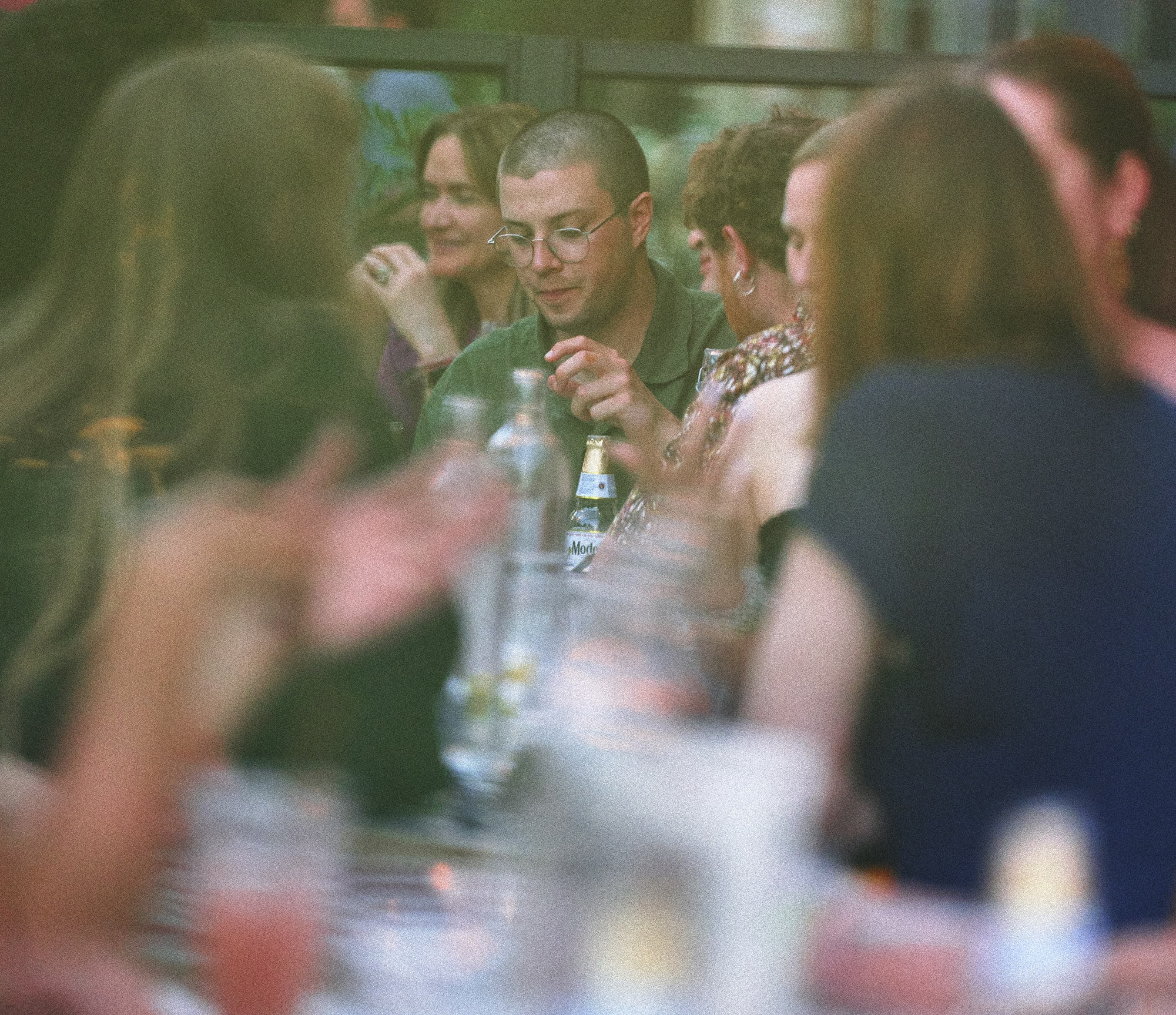
Olvera himself walked around the restaurant throughout the night. No performance, no distance. Just someone sharing what he made. He hugged people, clinked glasses, smiled gently.
If I could offer one small wish, it would have been to hear a bit more from him. A few words on each dish. A glimpse into the why. Not because it wasn’t legible, but because I missed the guiding voice. I wanted to know more about what moved him.
Still, the evening was complete. Not in its perfection, but in its sincerity. I left feeling full in the way that matters. Not just in the stomach, but in that soft, foggy place behind the chest where memory settles. Where taste becomes feeling. Where a night becomes a story.
And this one, I’ll remember.
